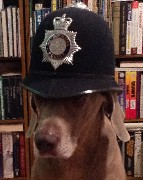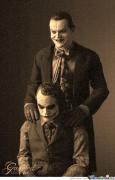Clearly an issue that needs to be trained for.
Exactly...how?
In combat, time is a zero sum resource, the opponents act simultaneously and every split second not used in finishing the fight is available to your opponent to be used to kill or cripple you...or another innocent in his downrange hazard fan.
We know now that bullets have to transect particular anatomical structures(timers and switches) to have any timely effect on forcing an opponent's behavior to change, and that multiple rounds may be required to hit those structures.
We also know from videos that a big percentage of predatory opponents flee or stop being a threat as soon as rounds come their way(Fuck! I'm being shot at!) or as soon as they're hit anywhere(Fuck! I've been shot!)
Setting an arbitrary speed limit seems optimistic at best. I remember Ayoob observing years ago that most people go cyclic in shootings and that the rate of fire was 4-5 shots per second. I reasoned that training should therefore be aimed at
controlling that rate of fire accurately and precisely. That's not an insurmountable goal at close range.
When Bolke and Dobbs began posting about "assessment speed" a light turned on. Watching videos where the shooter essentially uses his pistol as a shotgun, pointing the first shot at the offender and then triggering the rest of them as a cyclic burst of Hopers at moving twisting targets turned on another.
But again, exactly how do you train for an unpredictably moving 3D target that might need to be hit in a very specific spot covered with flapping clothing, with bullets that may or may not have any timely effect unless you smash the spine or the brain, that can collapse, surrender or turn to run inside your perceptual reaction time, when your allowing him another quarter second's time to shoot may kill or cripple you or another innocent
behind you, and your misses may kill another innocent behind him....while being filmed so that lawyers can take months to go frame by frame to see if you were justified by the millisecond, and the Nation's politicians eye the mob to see if there's an momentary advantage to destroying your life.
Be specific, and show your work, please.





 Reply With Quote
Reply With Quote






